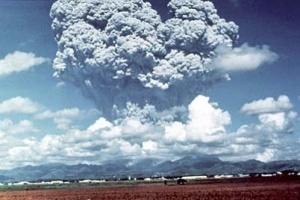Ash cloud poses “no threat” to Whitsun holidays

The UK Met Office has said the volcanic ash cloud poses no threat to holidaymakers planning to fly over the Whitsun break.
The Civil Aviation Authority also confirmed no flights from the UK would be disrupted at the weekend.
Meanwhile Transport Secretary Philip Hammond said the new forecast meant the bank holiday getaway could go ahead uninterrupted.
He has also put in place a new structure to deal more efficiently with any future eruptions by Icelandic volcanoes.
“The threat to the bank holiday has been lifted,” he announced.
ADVERTISEMENT
It means a big sigh of relief for millions of Britons preparing to fly out on half-term holiday ahead of Bank Holiday Monday.
A spokesman for the Met Office described the situation was “improving” with a much lower concentration of ash drifting over the UK at 35,000-55,000 feet.
However it also emphasised that its bullish report was merely a forecast and ultimately the situation was dependent on Mother Nature.
The agency recommended travellers keep up to day with their airline for any changes.
The statement follows Ryanair boss Michael O’Leary launching a scathing attack on the agency, describing its forecast as “totally inaccurate”.
O’Leary told Channel 4 News last night: “You cannot shut airspace on the basis of these entirely inaccurate Met Office forecasts of where a volcano ash plume may move 2,000 miles south of Iceland. It makes no sense.”
In the event of further eruptions, Philip Hammond has asked NATS and the Civil Aviation Authority to draw up procedures to let flights arrive and depart from the UK beneath the ash cloud, something which has never previously been allowed in UK airspace.
He described the new system as more “robust’ and would apply “common sense”. The planes would only start gaining altitude once they were safely clear of the “red zone”.
The volcano has quietened down after from the initial eruption last weekend, but ash remains circling around the Atlantic.

